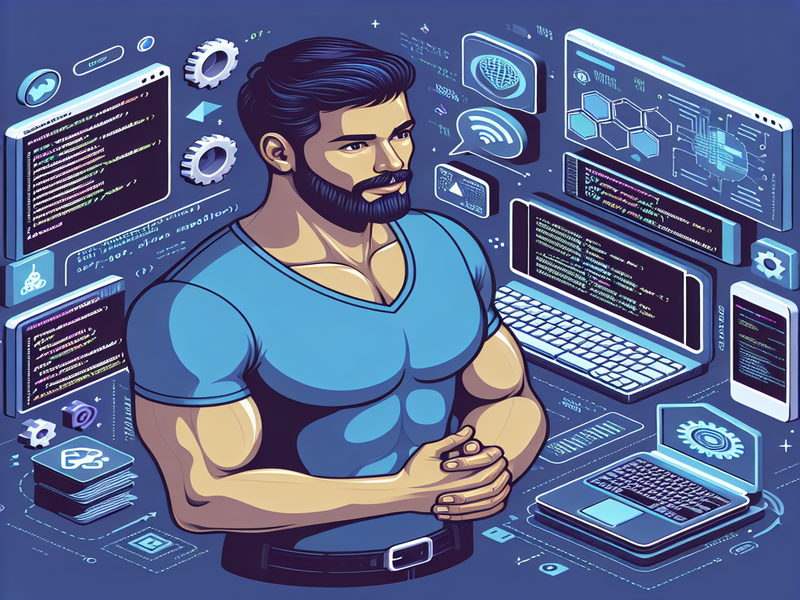- Updated: September 24, 2024
- 4 min read
The Transformative Impact of AI on Coding: Insights from Naveen Rao
Naveen Rao on the Future of AI: Coding is the Killer App
In the rapidly evolving world of artificial intelligence (AI), the search for a “killer app” that truly showcases its potential has been a topic of intense debate. However, according to Naveen Rao, Vice President of Generative AI (GenAI) at Databricks, the world has already found its killer app – and it’s coding.
Overview of the Interview with Naveen Rao
In a recent interview, Rao shared his insights on the transformative impact of AI on coding and product design. He highlighted that Large Language Models (LLMs) have already demonstrated remarkable capabilities in coding tasks, paving the way for true design automation.
“We’re seeing a lot of developers actually latch onto this, especially younger developers,” Rao said. “LLMs have also worked on code (besides text, images, audios, videos, etc.), and we’re already seeing design automation happening through coding assistance. It (coding) is a sub-class of a much larger class of uses around true design automation.”

Impact of AI on Coding and Product Design
Rao asserts that as coding tasks become increasingly automated, the ability to innovate in product design and create unique user experiences will become even more valuable. He envisions a future where developers can create apps simply by describing them in natural language, reducing the effort required to translate design ideas into functional applications.
“You can now create apps simply by describing them in English,” Rao explained. “As a result, the value of translating a design idea into an app has diminished because much of that process is now automated.”
According to Rao, being a developer in the future will mean effectively utilizing AI tools to enhance productivity and creativity. The focus will shift from coding itself to understanding why certain apps succeed while others don’t, allowing developers to concentrate on delivering exceptional user experiences.
Future Potential and Limitations of AI Technology
While AI technology has made significant strides, Rao acknowledges that there is still a long way to go before it can be reliably and deterministically used in core engineering. He points out that current LLMs primarily rely on pattern matching based on probabilities, rather than true reasoning capabilities.
“Current LLMs primarily pattern-match based on probabilities, not reason,” Rao explained. “Unlike humans or even animals that learn through a cycle of action and feedback, LLMs don’t engage in causal, real-world learning. While advancements, like the step-by-step reasoning introduced by OpenAI, are promising, there’s a long way to go.”
Rao believes that the push for reasoning in AI does not necessarily demand greater computing power. Instead, he suggests a shift towards smaller, high-quality datasets and more targeted tuning, which may not require the massive compute resources associated with training larger models.
Databricks is exploring various applications of AI and GenAI, including task automation, creative processes, and scientific research. One area of focus is automating tasks like answering HR queries or searching through company manuals, where some error can be tolerated. Additionally, Databricks supports the use of LLMs in drug discovery, where AI assists in analyzing protein interactions and advancing new drug development.
Conclusion
As the world embraces the transformative potential of AI, Naveen Rao’s insights shed light on the profound impact it will have on coding and product design. With coding emerging as the “killer app” of AI, developers and businesses alike must adapt to this new reality by leveraging AI tools effectively and focusing on delivering exceptional user experiences.
While challenges remain, particularly in the realm of reasoning and real-world learning, the future promises exciting opportunities for those willing to embrace the power of AI. As Rao emphasizes, the key lies in understanding the economics of AI, defining clear success criteria, and fostering responsible AI practices that balance innovation with ethical considerations.
Ultimately, the path forward involves a symbiotic relationship between humans and AI, where developers harness the power of these advanced technologies to drive innovation and create products that truly resonate with users. With visionaries like Naveen Rao at the forefront, the future of AI-driven coding and product design holds immense potential for transforming industries and shaping the world we live in.
To stay updated on the latest developments in AI, coding, and product design, visit UBOS and explore their cutting-edge solutions and resources.
